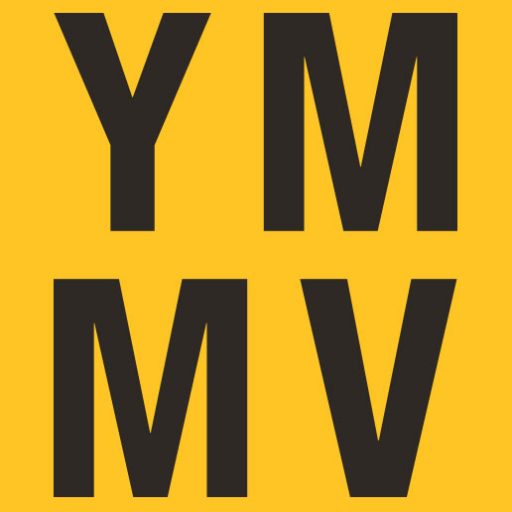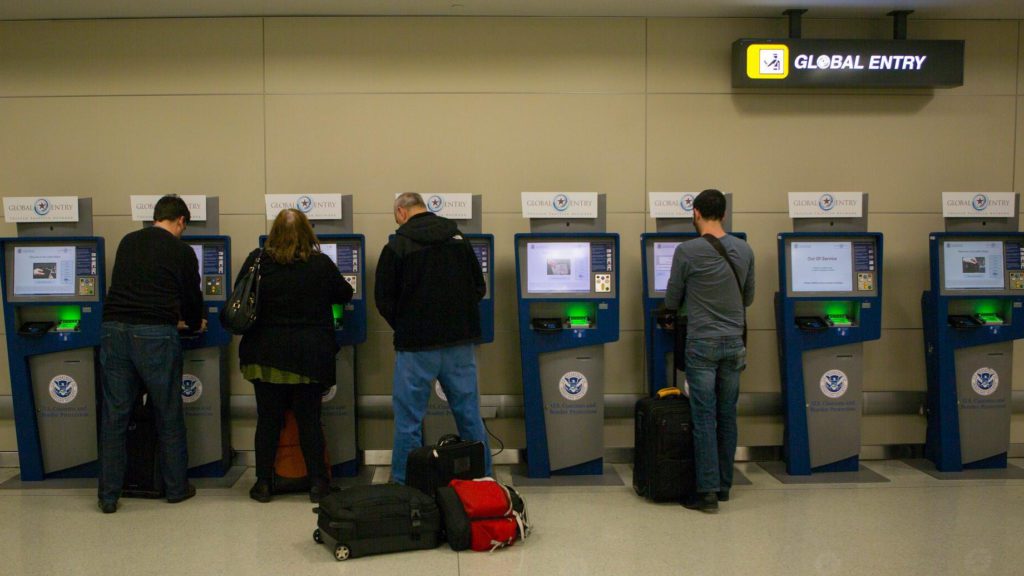We’ve had Global Entry for around seven years but don’t use the service all that often because we only travel outside the U.S. once or twice a year, if even that. The reason we signed up was that being approved for Global Entry also gets you TSA Precheck access, and for the small incremental cost, it was worth it even if we only use it once a year, or even just once or twice in the five years of our enrollment.
With the delays in processing applications, I’m not sure if that’s the best decision for everyone right now, but we have it so might as well use it.
On return to the U.S. from our recent trip to Germany, I got to experience the new technology being used by Customs and Border Protection (CBP) when using a Global Entry Kiosk for the first time, and I gotta say, it kinda creeped me out.
I should have known this technology advancement was coming. There were various stories over the past year that CBP was getting ready to implement this, but the rollout has been slow and happening one airport at a time. It ran under my radar until I experienced it for the first time.
Facial Recognition
To understand this change, you have to think about how Global Entry has worked up until now. Here’s the description, still on the CBP website.
At airports, program members proceed to Global Entry kiosks, present their machine-readable passport or U.S. permanent resident card, place their fingerprints on the scanner for fingerprint verification and complete a customs declaration. The kiosk issues the traveler a transaction receipt and directs the traveler to baggage claim and the exit.
That’s how it’s worked every time up until now. Except for Sharon who’d always have to go see an agent because the camera would only capture the top of her head and she’d have a picture that looked like Cousin It from the Addams Family.
This time, when getting to the passport check area of JFK Airport, we headed towards the line for Global Entry.
Fortunately, we were some of the only passengers going to the kiosks and pulled out our passports. What was slightly different was that there was a CBP agent standing by the machines; they’re usually unattended. As I walked up, I was instructed by the on-screen prompts to look at the camera and center my face on the screen.
I was expecting to be asked for my fingerprints and passport, but instead, the kiosk spit out my receipt. Not only did it include my name, but also the flight I arrived on, with no other information that a scan of my face.
We also found out why the agent was there. When Sharon walked up to the kiosk, and it took the usual picture of her head, he walked up and adjusted the camera so it was able to see her face. Once it was, she received her receipt, as I did.
What’s the big deal?
Why was I so surprised? I gave my picture to Global Entry when I signed up. I have to provide my passport number to the airlines when I fly, so it’s easy to match those up. The only thing that was needed is the computer technology that’s able to match my picture with the one they have on file. I have a phone that does that every time I unlock it so why couldn’t the government have the same capabilities?
At the time, it creeped me out for a moment. With the stories about the protesters in Hong Kong having to wear masks to keep the CCTV cameras and drones from identifying them (BTW, I’m glad I decided to hold off on our visit there), the idea of the government being able to I.D. me just with a picture and then knowing where I was and where I was going had a newly ominous feel to it.
I was the one who submitted to this in the first place. Heck, the government has my picture from my passport application. I gave CLEAR my fingerprints and my retinal scans to get through the security theater of the TSA checkpoints a little bit faster. Disney collects my biometric data to let me into the park with my annual pass. I’m no safer online as my browsing history, my physical location, and even possibly, my conversations are used to tailor the information I’m shown, even if I use a VPN.
So while the CBP says that as a U.S. citizen, you’re still able to opt-out of using facial recognition as means of confirming your identity when entering or leaving the U,S,; it doesn’t mean they don’t already have your picture (because they do). If the TSA and airlines have their way, this is the way we’ll all be checking in for our flights and making our way through security. Now that we’re living in the future, who knows what the future will bring?
Like this post? Please share it! We have plenty more just like it and would love if you decided to hang around and clicked the button on the top (if you’re on your computer) or the bottom (if you’re on your phone/tablet) of this page to follow our blog and get emailed notifications of when we post (it’s usually about 3 or 4 times a day). Or maybe you’d like to join our Facebook group (that has over 10,000 members) – we talk and ask questions about travel (including Disney parks), creative ways to earn frequent flyer miles and hotel points, how to save money on or for your trips, get access to travel articles you may not see otherwise, etc. Whether you’ve read our posts before or this is the first time you’re stopping by, we’re really glad you’re here and hope you come back to visit again!
This post first appeared on Your Mileage May Vary
Feature photo by James Tourtellotte/CBP
Join our mailing list to receive the latest news and updates from our team.

